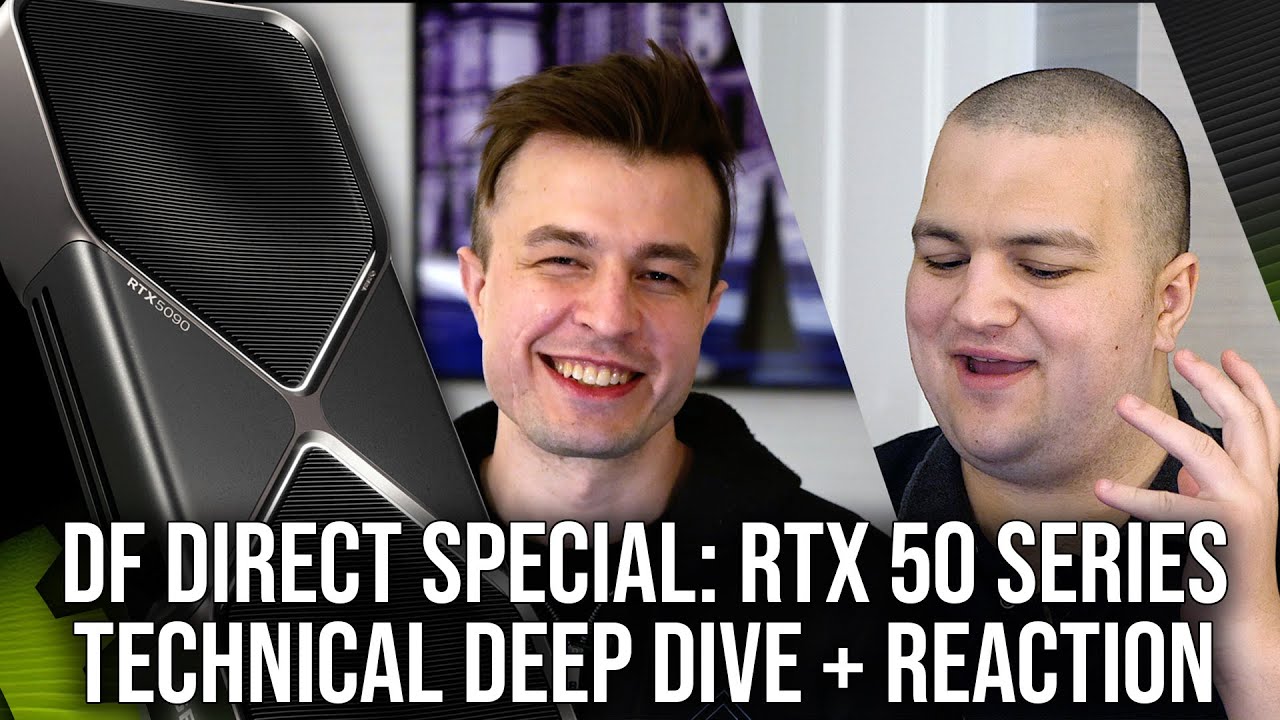The video discusses Nvidia’s RTX 50 Series, highlighting the new Blackwell architecture, which features significant enhancements like concurrent floating-point and integer processing, FP4 acceleration for AI workloads, and improved ray tracing capabilities with Mega geometry support. The hosts emphasize the importance of these advancements for gamers and content creators, noting that while performance gains are substantial, the value of the RTX 50 Series depends on individual gaming habits and the evolving landscape of graphics technology.
In a recent video, the hosts discussed Nvidia’s unveiling of the RTX 50 Series, showcasing the new Blackwell architecture and its advanced features. The presentation included insights from an in-depth editor’s day event at CES in Las Vegas, where Nvidia engineers detailed the architecture’s enhancements over its predecessor, Ada Lovelace. Key highlights included a significant overhaul of the Streaming Multiprocessor (SM) design, which now allows for concurrent processing of floating-point and integer calculations, potentially improving performance in various gaming scenarios.
Another major development is the introduction of FP4 acceleration in the tensor cores, aimed at enhancing machine learning workloads. This advancement facilitates lower precision calculations, which can lead to better performance and memory efficiency for local AI tasks. The hosts emphasized the importance of these features for neural rendering applications, particularly in upcoming technologies like DLSS 4, which aims to reduce memory usage while improving image quality. The Blackwell architecture also introduces a new AI management processor to handle various AI tasks in gaming, although its practical applications in current titles may be limited.
The video further explored the new RT core designed for Mega geometry, which enhances ray tracing capabilities by improving the throughput of ray-box and ray-triangle intersections. This architecture allows for more complex scenes and better performance in ray tracing tasks. The hosts noted that while Mega geometry supports older RTX GPUs through software, Blackwell includes hardware support, potentially leading to significant performance improvements in future titles that leverage this technology.
In terms of power management, Nvidia’s Max Q technology has been improved to allow for more responsive frequency switching and better sleep behavior, enhancing efficiency for both desktop and laptop GPUs. The new display engine supports DisplayPort 2.1 and improved video encoding capabilities, particularly beneficial for content creators. The hosts highlighted the competitive pricing of the RTX 50 Series compared to previous generations, noting that while the performance gains may not be groundbreaking, they are still substantial, especially when considering the new features and technologies.
Finally, the discussion shifted to the implications of these advancements for gamers and content creators. The hosts pointed out that while Nvidia’s software package, including features like DLSS and frame generation, offers compelling advantages, the actual performance improvements vary significantly depending on the type of games played. They emphasized the need for consumers to consider their specific gaming habits and requirements when evaluating the value of the RTX 50 Series, especially in light of the ongoing evolution of graphics technology and the growing importance of features beyond raw performance metrics.
